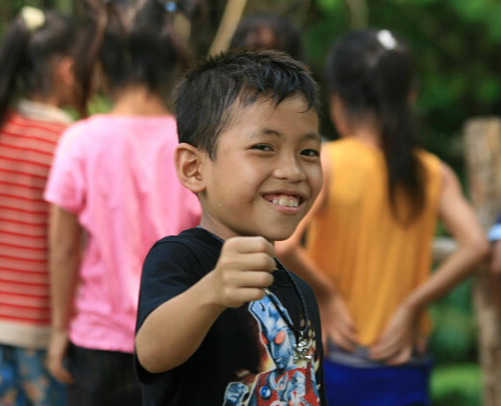Lai Chau possesses sublime nature with mountain peaks among the highest ones in Vietnam. You'd need permits from the local authority to climb these mountains though. The province is home to a number of diverse ethnic communities that can be visited on your trip through Lai Chau such as Gia Khau Village (Hmong, near the city), Hon Village (Lu People, Tam Duong District, 15km from the city), Na Luong (Lao People, Tam Duong District), Pu Dao (Hmong, Sin Ho District), Vang Pheo (Thai, Phong Tho District, 30km from the city)...
Here are top things to do in Lai Chau:
1. Sin Ho Plateau
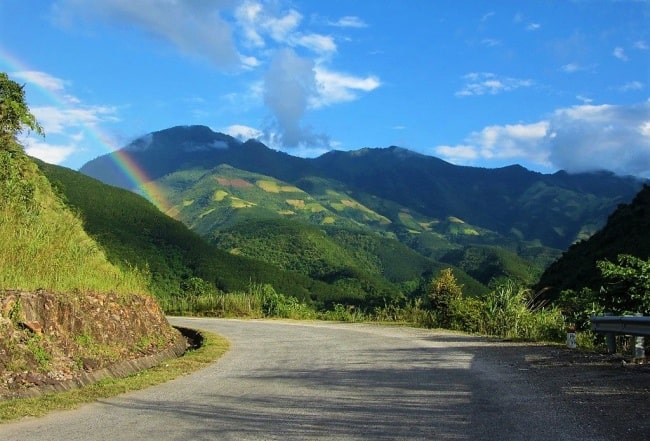
A trip to Sin Ho village is really an off-the-beaten-track journey to all arrivals on a tour to Northern Vietnam. Sin Ho village, located in Sin Ho district, Lai Chau Province, about 60km to the west of Lai Chau city, is considered as ‘the roof of Lai Chau province’ with an altitude of 1,500m and the cool climate all year round. The village has attracted more and more tourists in recent years thanks to its unspoiled nature the diverse cultures of local ethnic minorities.
Coming to there, tourists will be appealed by abundant stunning and picturesque landscapes such as O Rocky Mountain, Tien Cave, Pu Sam Cap cave ensemble, Sin Ho Stream, etc. When deeply learning about the daily life and unique customs of ethnic groups there, you can pay a visit to the villages of Pu Dao, Ta Ghenh, Hoang Ho, Ta Phin, Phang Xo Lin, etc or integrating into highland markets on weekends. Particularly, you can have a great experience of different types of cure methods such as medicinal herb bath, massage, and point acupuncture services on your tour to Vietnam.
Some should be recommended to bring along:
- Motorbike: it could be rented
- Sleeping bags and tent: in case that you cannot find any accommodation.
- Food and water
- Raincoat and warm clothes: it can be chilly at night and early in the morning. Lai Chau weather is very unpredictable and rains can happen quite often
- The app maps
2. Pu Sam Cap Cave
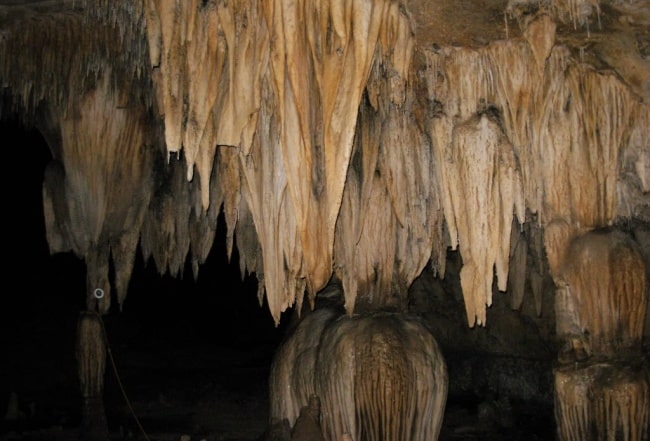
The creator has granted Lai Chau many majestic mountain ranges, lush green forests, beautiful rivers, and streams….Among these, Pu Sam Cam is the brightest tourism point, a must-see destination for a tour to the Northwest.
Pu Sam Cap cave, a limestone mountain range formed from the tectonic era, is on the way to Sin Ho plateau. This complex consists of 3 big caves named Thien Mon (Heaven Gate), Thien Duong (Paradise) and Thuy Tinh (Glass). With wild and mysterious scenery, Pu Sam Cap cave has been luring intrepid tourists.
3. Hoang Lien Son National Park
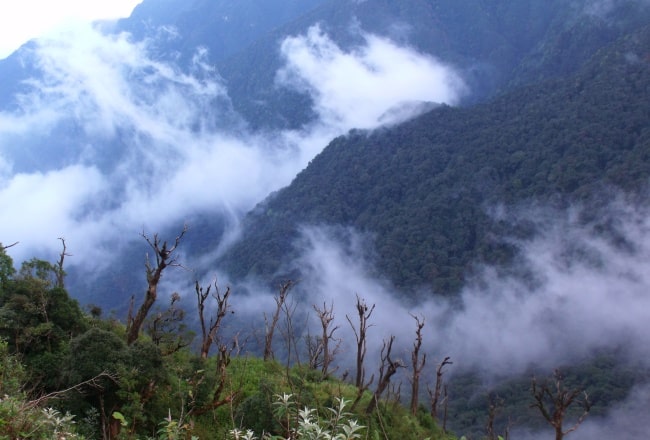
Hoang Lien Son National Park is one of the important special-use forests of Vietnam for ecotourism and scientific research. On the northwest of the Hoang Lien mountain range located the highest peak Fansipan Indochina (at 3,143m). There are 2,024 species of 200 families of plants, including 66 species in the Red Data Book of Vietnam, 32 rare species, 11 endangered species such as blue cypress, bamboo, red pine. Apart from this, there are 700 species of medicinal plants, such as rhododendron, needle, cardamom, etc.
You can have trekking and overnight camping trips or enjoy a lot of other activities such as archery, bird watching and learning how to walk on stilts.
4. Tam Duong Market
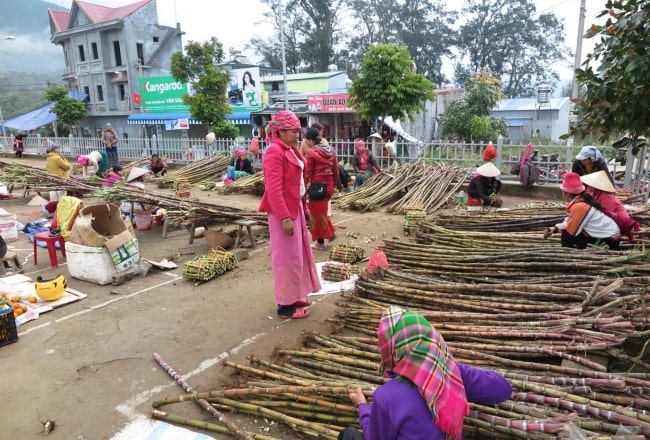
Tam Duong is the town between Sapa and Lai Chau. Tam Duong market is a typical mountain market. On the midway through town on National Highway 2, the local market is a must-see visit.
Being at the foot of Hoang Lien Son mountain range, Tam Duong market is not only the trading place for local specialties and production tools but also the meeting point for the Dao, Mong, Thai, Giay, and Lu ethnic minority people on every Thursday and Sunday.
When shopping in this market, you will be lost in the middle of abundant locally-made products which reflect the local culture. Market goers, in their hand-made colorful costumes, sell even locally-made musical instruments like flutes and pipes.
5. The Village of Na Luong
Thanks to the uncultivated beauty and the remaining cultural values, the village of Na Luong (Na Tam commune, Tam Duong, Lai Chau) has become a tourist attraction attracting the eyes of adventurers. 100% of the inhabitants who are of the Lao ethnic group know how to preserve striking features of the tradition. The stilt houses hidden above the green trees in the fog and the women in colorful clothes impress you right away. It is perfect to participate in the traditional spring water fight.
6. The Village of Vang Pheo
Vang Pheo Village (Muong So Commune, Phong Tho District) is a place that has long been home to the ethnic White Thai. The culture of the Thai White ethnic group in Vang Pheo remains intact despite development. Houses on stilts, White Thai clothes (black dress, long …) all preserved bath you in the minority culture. Traditional games during the holidays (nem con, gay day …) are worth discovering.
7. The Rice Field of Muong Than
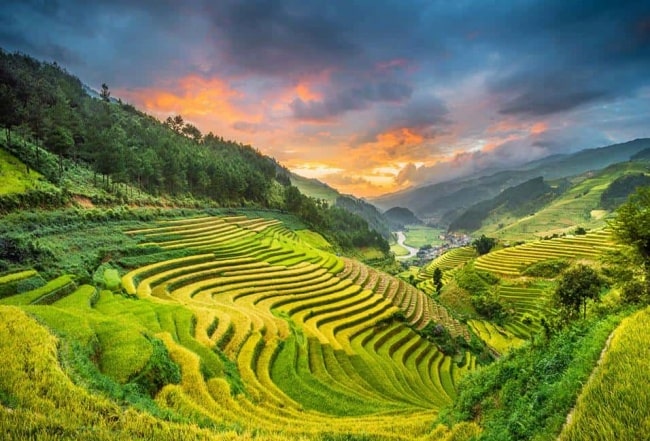
Muong Than is the third of the four largest rice paddies in the mountainous regions of northern Vietnam. The seasons of rice, corn, vegetables give different colors to the landscapes.
8. Tac Tinh Waterfall
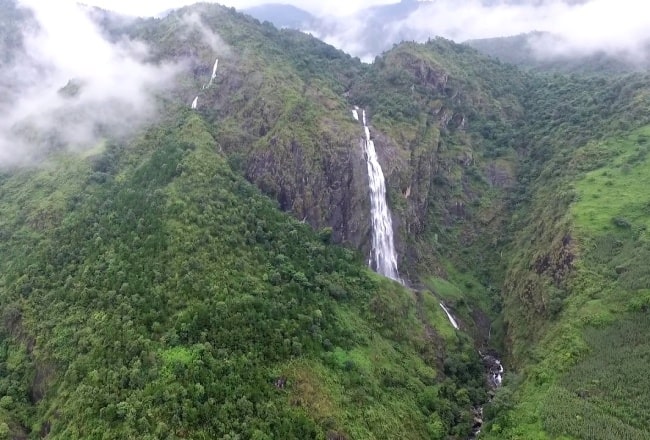
Tac Tinh Waterfall is known as mother nature provides fresh and plentiful freshwater for people in Tam Duong district. Every time the rainy season comes, the water from the top of Hoang Lien Son mountain makes the image of Tac Tinh Waterfall be lively with the water flowing down to the lake looked like white silk stretching to the bottom of the waterfall.
9. Pu Ta Leng Peak
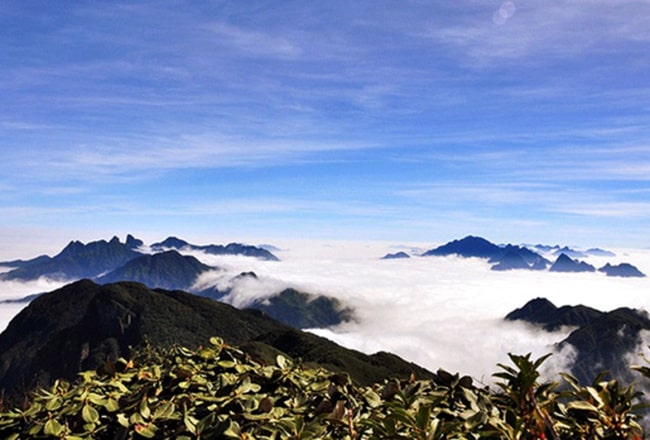
Before conquering Mount Fansipan – the roof of Indochina, you have to overcome the peak Pu Ta Leng. In order to reach the peak of Pu Ta Leng, the visitors have to prepare psychological readiness for climbing the stream through the forest thoroughly. A secret to traveling Lai Chau safely is to go on a sunny day if you want to successfully conquer the peak of Pu Ta Leng mountain. If it rains, the road is extremely difficult and also easy to encounter natural disasters such as flash floods.









